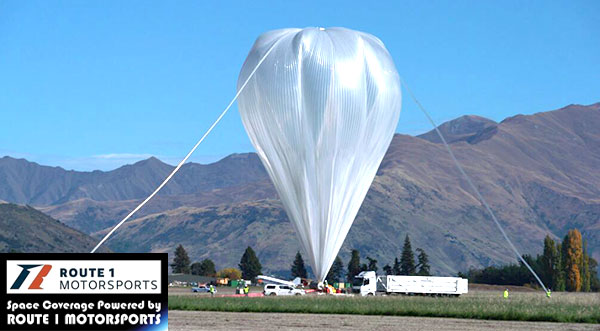mission began at 11:42 a.m. on April 16

(NASA) – NASA successfully completed a flight test of its super pressure balloon carrying the Super Pressure Balloon Imaging Telescope science mission at 9:27 a.m. EDT, Thursday, May 25, after some 39 days and 14 hours of flight.
The mission began at 11:42 a.m., Sunday, April 16 (7:42 p.m. April 15 in U.S. Eastern Time), launching from Wānaka Airport, New Zealand, which is NASA’s long-duration balloon program launch site.
“This flight was, bar none, our best to date with the balloon flying nominally in the stratosphere and maintaining a stable float altitude,” said Debbie Fairbrother, NASA’s Balloon Program Office chief at the Agency’s Wallops Flight Facility in Virginia.
“Achieving long-duration balloon flight through day and night conditions is an important goal for our program and the science community, and this flight has moved the needle significantly in validating and qualifying the balloon technology.”
Having identified a safe landing area over southern Argentina, balloon operators from NASA’s Columbia Scientific Balloon Facility in Palestine, Texas, sent flight termination commands at 8:37 a.m. EDT, on May 25.
The 18.8-million-cubic-foot (532,000-cubic-meter) balloon then separated from the payload rapidly deflating, and the payload floated safely to the ground on a parachute touching down in an unpopulated area 66 nautical miles (122 kilometers) northeast of Gobernador Gregores, Argentina.
NASA coordinated with Argentine officials prior to ending the balloon mission; recovery of the payload and balloon is in progress.
During its nearly 40-day journey, the balloon completed a record five full circuits about the Southern Hemisphere’s mid-latitudes, maintaining a float altitude of around 108,000 feet.

In the coming days, the predicted flight path would have taken the balloon more southerly with little exposure to sunlight, creating some risk in maintaining power to the balloon’s systems, which are charged via solar panels. The land-crossing created an opportunity to safely conclude the flight and recover the balloon and payload.
“I could not be prouder of the team for conducting a safe and successful flight, and the science returns from SuperBIT have been nothing short of amazing,” said Fairbrother.
map of SuperBIT balloon flight path, showing green circlings around Antarctica
Next up for NASA’s Balloon Program is a science mission launching from the Agency’s Columbia Scientific Balloon Facility in July.
NASA’s Wallops Flight Facility in Virginia manages the agency’s scientific balloon flight program with 10 to 15 flights each year from launch sites worldwide.
Peraton, which operates NASA’s Columbia Scientific Balloon Facility (CSBF) in Texas, provides mission planning, engineering services, and field operations for NASA’s scientific balloon program.
The CSBF team has launched more than 1,700 scientific balloons over some 40 years of operations. NASA’s balloons are fabricated by Aerostar. The NASA Scientific Balloon Program is funded by the Science Mission Directorate Astrophysics Division at NASA Headquarters in Washington.
CLICK HERE FOR BREVARD COUNTY NEWS
The post NASA Successfully Completes Flight Test With Super Pressure Balloon Imaging Telescope appeared first on Space Coast Daily.

